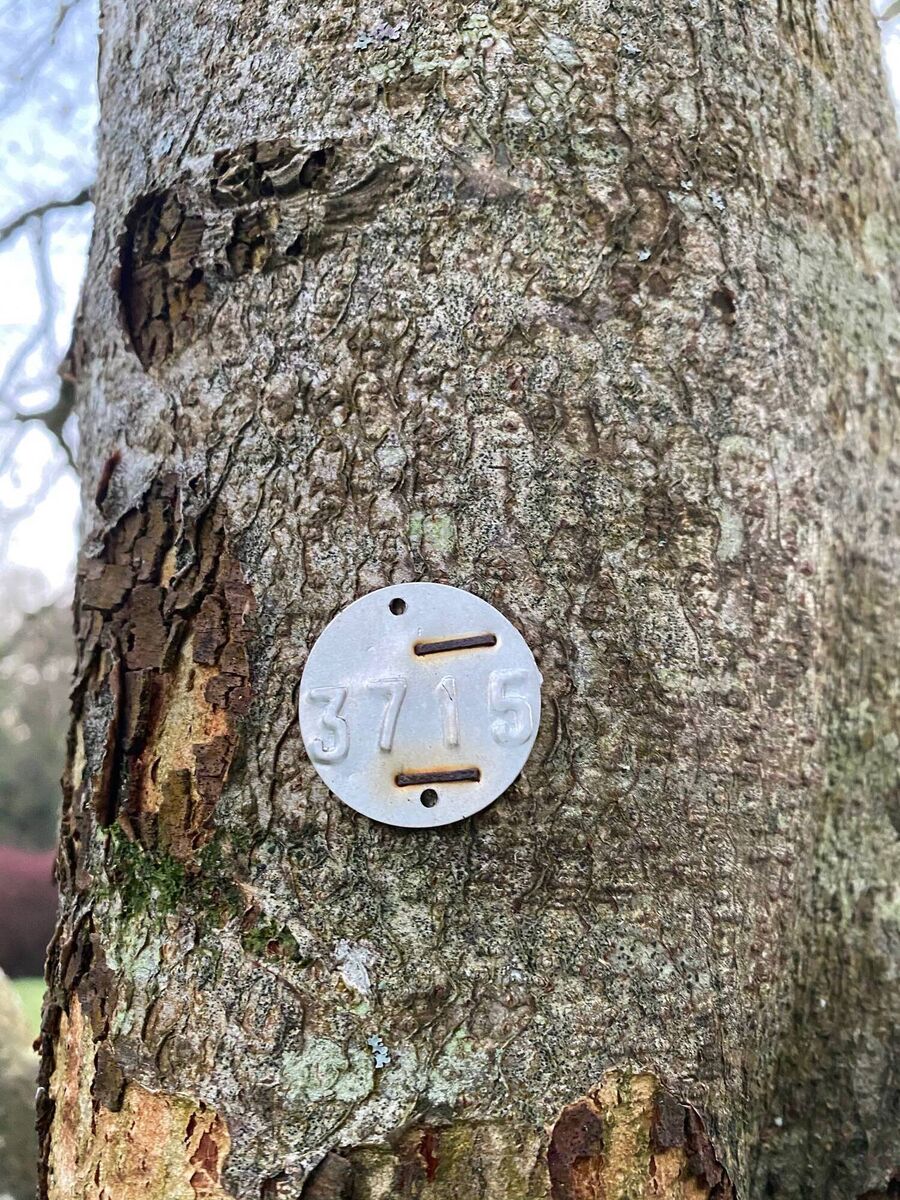Me and #3715: A Cork woman on her relationship with a tree at the Marina

Tree #3715, at 'The Meadow', near the Marina in Cork, through the seasons.
I hugged a tree, and I liked it.
When I say ‘hug’, It was probably more of a quick embrace as I wrapped my arms around its slim trunk, with a measuring tape in hand.
You may be wondering why I was coming so up close and personal with a tree.
My story starts sixteen years ago, when we bought our house in Blackrock, Cork.
Almost every day of those years has been punctuated by a daily walk down The Marina and into ‘the field down The Marina’, as I call it. I don’t know if that field has a name.
During flights of fancy, I think of as an arboretum, and I have had wistful moments of wishing that each tree could have a name plaque near it so that I would know what it is. The thing is, you see, I don’t know much about trees, but I do know that I love and respect them.
You can imagine my delight when Cork’s Green Spaces for Health produced their Tree Trail map of this little suburban oasis of green. It was interesting to see that they have described the field as ‘The Meadow’ though. Arboretum may be punching above its weight, but it’s certainly more of a field of trees than a meadow.
Whatever it is called, that small patch of green has been a lifesaver for me.
From back in the days when my husband used to drop our two girls to school, I would tear down The Marina with our dog, Nellie, before work.
And there I would walk up and down for twenty minutes or so, thinking through plans for my working day, problem-solving, writing something in my head, or just day-dreaming with the trees.
But always, I would pause at one particular tree to remember loved ones whom I have lost.
This became a daily ritual for me. Touching the lower branches or a leaf on that tree somehow gave me a sense that I was connecting with them in some way. As I walked up and down, they were walking by my side. That narrow path got a little crowded at times... but I was in lovely company as I walked among the trees.
Every day, there was something to notice in that field of trees. Frosted seed heads in the deep of winter, the vibrant hint of budding leaves in springtime, summer birdsong and the dappled, autumn light on the path under the trees.
I took photos of the trees and wildlife, but never once could I have dreamed that one day, at the height of a global pandemic, I would be wrapping my arms around a tree down The Marina in broad daylight.
How this came about was that I joined an on-line Masterclass by artist, Carol Anne Connelly, and facilitated by The Glucksman during lockdown last November.
The Masterclass was about observation and engaging with place, and it ran over two Saturday mornings via Zoom.
Our challenge was to walk within our 5km and chose one thing for our project to develop our observational skills. It could be a building, a river, a monument, a tree...
Say no more, the tree it was for me.

Carol Anne tasked us to research its history and folklore, photograph it, listen to it and record the sounds around it. As well as audio recordings, we were to capture those sounds with words or pictures in a sketch book. This multisensory, reflective exercise was an exciting prospect, pushing me beyond my comfort zone to consider using all of my senses.
The tree in the field down The Marina became my object of intense focus over the following two weeks.
I named my project, ‘Project 3715’ after the number tag on its trunk.
From the Green Spaces for Health Tree Trail, I found out that it was a Wild Service Sorbus (Sorbus Torminalis), something I had never heard of before.
This tree is often associated with ancient woodlands and it has a distinctive bark.
Researching the folklore of the tree, I discovered that the fruits, also known as chequers, are said to taste like dates and were given to children as sweets.
I was fascinated to find out how old 3715 was, but my research led me to a dead end as it seems that the records for the tree tagging have never been digitised by Cork City Council.

I used a simple on-line method instead to figure out the age of the tree.
It turns out that 3715 and I go back a long way together.
Both of us are in our fifties; that tree was a little slip of a thing too back in the 1960’s.
My tree hug didn’t go unnoticed.
A young mum side-glanced and smiled at me and then quickly looked away as she passed by with a pushchair and a small child walking by her side. I imagined she held her child’s hand a little tighter. I smiled and waved, feeling a bit morto and wondered what she must have been thinking watching a middle-aged woman wrap her arms around a tree.

They stayed in the field a while, long enough to see me doing bark rubbings too. The child was fascinated, but shy. Both mother and child looked away each time they passed. Had it not been during lockdown, I would have called them over and given the child some of my paper and a pencil and asked if he would like to do a bark rubbing.
My sketch full of bark rubbings, sketches, words and swirls, I stood and listened to the sounds around me. The mother and child had long gone so I was alone.
Listening to the tree was fascinating.
Having talked to it in my head for years, it was the least I could do.
What I heard and recorded last November was a melody of whispering, leafless branches. The baseline was interesting too; the constant hum of Tivoli Docks in the background, with an occasional percussion moment provided by the whallop of a shipping container landing on deck across the nearby River Lee.
My recordings also picked up children’s laughter as they passed by on The Marina.
I loved that because it captured some of the folklore of the Wild Service Sorbus tree.
When doing my research, I also came across Katie Holten’s wonderful Irish Tree Alphabet. This project has its roots and inspiration in Ogham, in which the characters or letters were called feda "trees", or nin "forking branches" due to their shape. Each letter of the Latin alphabet is given a corresponding tree.

I downloaded the Irish Tree Alphabet font and typed ‘Wild Service Sorbus’ in tree font.
Imagine my excitement - at last I could speak its language.
On the second Saturday of our course, we all shared our findings via Zoom, each project as fascinating as the next.
For me, this project felt like the start of something. I began to visualise some of the bark rubbings as textile pieces. That still might happen yet, but for now, I feel that it is important to write my story of 3715.
As I was studying the tree last November, a haiku came to mind. Little did I know then what would transpire.

Over the last two weeks, I’ve been walking to the field down The Marina with a quiet dread that 3715 might have been hacked down by Cork City Council as part of their ‘improvement’ plan for the Blackrock to Passage Greenway.
As I approach the field these days, I scan it first from a distance, searching for 3715 to see if it is still standing or if it has been flung in a pile like the rest, having been deemed too old, too dangerous, or simply in the wrong place – in the way of improvement.
I wonder what number tags those other felled trees proudly bore?
What stories and folklore did those beautiful old trees hold?
We will never know now.






